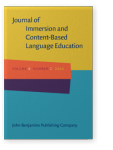Vol. 8:2 (2020) ► pp.230–256
Vol. 8:2 (2020) ► pp.230–256
Repeated readings and Chinese immersion students’ reading fluency, comprehension and character recognition
Although reading fluency instruction has been identified as an important literacy focus for English proficient students, little research has examined its role in foreign language settings, and it has not been studied in Chinese immersion education. The current research compared two seventh grade Chinese immersion classes. One class did repeated timed readings in student pairs, while the other class spent more time on comprehension activities. Both groups increased their correct Chinese characters per minute rates over the treatment period, but the repeated readings group outperformed the other group on reading fluency, character recognition, and reading comprehension measures. In addition, the students who engaged in repeated readings were better able to generalize reading fluency gains to new, but related, reading materials; they also reported more confidence and enjoyment when reading Chinese. Suggestions for integrating peer reading fluency procedures into language arts instruction are proposed.
Article outline
- 1.Introduction
- 2.Literature review
- 2.1L1 reading fluency research
- 2.2L2/FL reading fluency research
- 2.3Reading fluency and Chinese foreign language learners
- 2.4Attitudes about reading Chinese
- 3.Methods
- 3.1Setting and participants
- 3.2Materials
- 3.2.1Chinese reading fluency (CRF)
- 3.2.2Chinese character recognition (CCR)
- 3.2.3Multiple-choice reading comprehension (MCRC) and cloze reading comprehension
- 3.2.4Attitudes about reading Chinese questionnaire
- 4.Results
- 5.Discussion
- 5.1Limitations and future directions
- Acknowledgments
-
References
